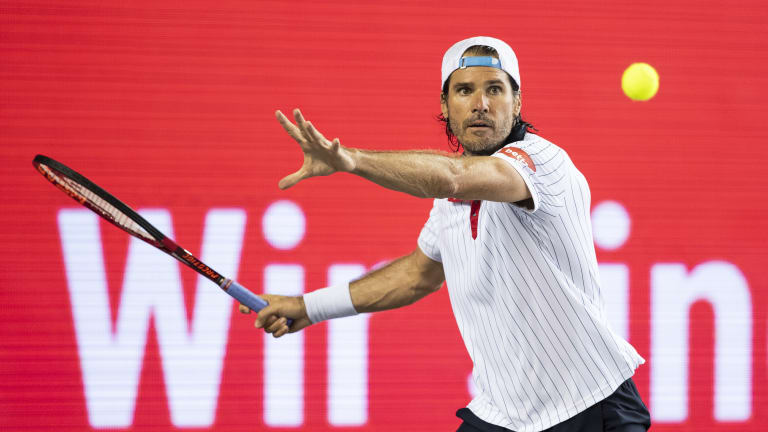Tommy Haas has held many distinctions during his tennis career. He competed on the ATP Tour for more than two decades, captured 15 singles tournaments, played four Grand Slam semifinals, reached No. 2 in the world and won an Olympic silver medal for Germany. But those who get on court with Haas these days know him better as the unofficial dingles ambassador.
“I can’t praise it enough,” says Haas. “It’s always a blast to play.”
What’s dingles?
To the uninitiated, it’s a four-player game that—as the name would indicate—is a mash-up of singles and doubles. The setup calls for two doubles teams to start on opposite baselines. A point begins when both players on one side each feed a ball to their crosscourt opponents and engage in two simultaneous crosscourt singles points using half the court including the doubles alleys. With no serves or returns and less ground to cover, extended rallies are fairly common.
“We’ve tried playing the first ball out down the line,” says Haas, “but it’s not as much fun. Playing crosscourt encourages more angles so you can drag your opponent of the court. It’s more dramatic in my opinion.”
When the singles point ends, “dingles!” is yelled and the remaining ball is played out as a doubles point between all four players using the entire court. With players often spread out, the scrambling can produce thrilling exchanges. A team earns a point only when it wins both the singles and doubles rallies. The combination of both disciplines promotes a variety of tactics. Play to a set score and then switch courts—flip the deuce and ad players—or rotate partners.
Haas, who currently serves as tournament director of the BNP Paribas Open in Indian Wells, can’t recall how or when he was introduced to dingles. All he knows is that over the last year it has become his preferred game to play on a tennis court. While he still enjoys and competes in singles matches, post-retirement opponents at his ability level are challenging to come by. There’s only so much of a sweat he can break yo-yoing players from side to side.

